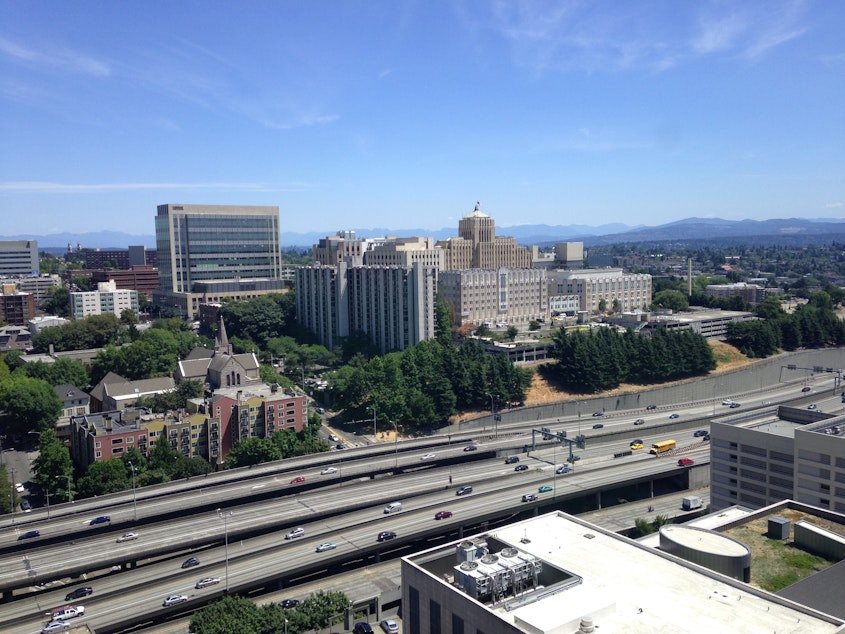Latinos At Highest Risk From Air Pollution, Study Says

Neighborhoods where non-English speaking Latinos live tend to have the most toxic air quality, according to new research out of Washington State University.
TRANSCRIPT
Picture a U.S. map with clusters of flaming red dots laid over it. And the dots represent hot spots for cancer-causing air pollution.
That’s one way to view Raoul Liévanos’ latest research findings. He’s an assistant professor of sociology at WSU.
On this map, the Northwest looks relatively good. Most the hotspots are in the Northeast and California. But there are clusters around the Seattle and Portland metro areas.
Sponsored
But, regardless of geography, Liévanos found similar groups of people in these toxic zones. They’re mostly non-white and low-income. And there’s something else that stood out to him: language and immigrant status.
People with limited English ability tend to live near pollution-causing freeways and industrial areas. And Latinos outnumber any other group.
Liévanos said the reasons for this vary. But sometimes it’s because, historically, city planners put environmental hazards near these low-income areas.
He hopes this research will help city officials and others address some needs in these neighborhoods.
Liévanos: "Do we have translation services for them? Are there mechanisms that allow for them to be incorporated in the political process or other important local processes? And if not, maybe that’s something that influences their vulnerability, right? That should be addressed."
Sponsored
Liévanos’ findings are published in the November issue of Social Science Review.

